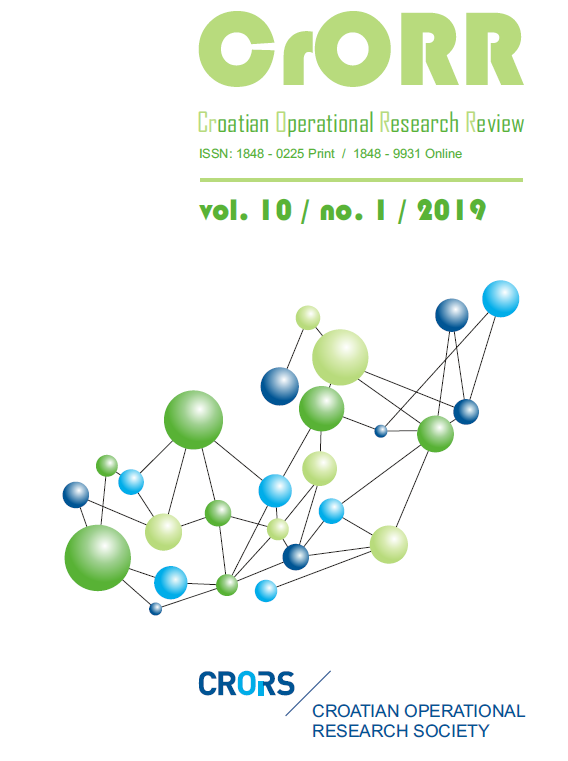Optimising the number of teaching and researching staff within Croatian higher education system
Abstract
Human resources represent crucial resource and capital for any organization’s success, because they generate knowledge, skills, abilities and experience which distinguish organizations and emphasize their competitive advantage. Nowadays, managers are struggling in their competition in order to maximize performance results and other positive effects obtained by their crucial resource and in the same time minimizing production costs and other belonging losses. Although, higher education does not represent production in the true sense of the word, management leads the same battle, related to faculty teaching and researching staff workload, setting goals and various constrains.
The main aim of this paper is optimization of human resource allocation within Croatian higher education system, according to several goals, related to their teaching and researching staff workload, minimizing deviation from set goals defined according to Croatian higher education regulations. The paper suggests the use of integer goal programming model in order to find optimal solution presented with the number of teachers and researchers within each department of chosen faculty. The model will be applied to the example of Croatian faculty, due to certain specificities of Croatian higher education system and will be applicable to any other Croatian faculty. Different optimal model solutions, obtained for different number of goals, will be compared within the paper. This model will secure optimal level of teaching and researching positions, considering multiple goals, with the emphasize of evolution and progression on individual level, simultaneously providing the best quality for students, as well as competitive and profitable work of the institution.
Downloads
Published
Issue
Section
License
- Authors retain copyright and grant the journal right of first publication with the work simultaneously licensed under a Creative Commons Attribution License that allows others to share the work with an acknowledgement of the work's authorship and initial publication in this journal
- Authors are able to enter into separate, additional contractual arrangements for the non-exclusive distribution of the journal's published version of the work (e.g., post it to an institutional repository or publish it in a book), with an acknowledgement of its initial publication in this journal.
- Authors are permitted and encouraged to post their work online (e.g., in institutional repositories or on their website) prior to and during the submission process, as it can lead to productive exchanges, as well as earlier and greater citation of published work (See The Effect of Open Access).


